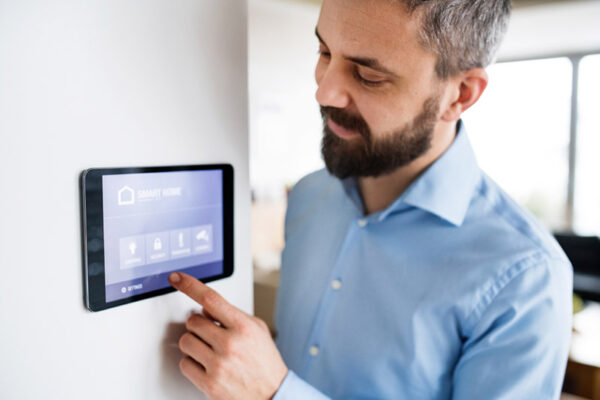In the pursuit of tailored heating and cooling solutions for optimal comfort, you’ve likely explored the realm of home thermostats. These unassuming devices play a pivotal role in managing the energy-intensive heating and cooling systems that significantly impact your daily comfort and overall well-being.
Unveiling the Simplicity of Digital Thermostats
Delving into the world of digital thermostats during these times of escalating energy costs reveals a surprisingly straightforward mechanism enriched with cutting-edge technology.
Digital Thermostats Insights
Digital thermostats empower homeowners to customize indoor temperatures through programmable schedules. Unlike their analog counterparts, it offer advanced temperature settings and options, with many evolving into intelligent, responsive devices.
Unraveling the Functions of Digital Thermostats
Advanced digital thermostats boast internal components that provide precise and responsive adjustments to room temperature. Equipped with electronic sensors, they continually monitor the ambient temperature, ensuring the room stays within a narrow range of the target setting.
Optimizing Digital Thermostat Settings
Adhering to recommended winter temperatures of 18 to 21 degrees Celsius by the Energy Saving Trust and the World Health Organization’s endorsement of 18 degrees for a healthy environment and quality sleep, digital thermostats provide a sophisticated means to achieve these ideal conditions.
Exploring the Diversity of Digital Thermostats
Digital thermostats come in four main types: Non-programmable, programmable, Wi-Fi-enabled, and smart thermostats. As you move down this list, the cost increases, but so does energy efficiency, making each option a strategic investment in home comfort and sustainability.
Assessing Digital Thermostat Accuracy
In the quest for precision, digital thermostats, with their digital sensors, outshine mechanical counterparts. Room temperature accuracy is crucial, ensuring that your space stays within a one-degree range of your thermostat setting.
Mastering the Art of Calibration
To verify your digital thermostat’s accuracy, a simple calibration test involving a precise thermometer can be conducted. By comparing readings after 15 minutes, you can ensure your thermostat is delivering accurate temperature control.
Decoding Thermostat Displays
Understanding the numbers displayed on your thermostat is key to effective temperature management. The displayed number represents the ambient temperature in your home, allowing you to set and maintain your desired comfort level.
Deciphering RC and RH Differences
Distinguishing between RC (red cooling) and RH (commonly red) wires in your thermostat’s wiring system is crucial. While both play roles in thermostat control, RC is specifically geared toward managing the cooling system.
Unveiling the Investment in Comfort
While digital thermostats may come with a higher price tag compared to their analog counterparts, their enhanced accuracy and additional features, such as programmability, Wi-Fi connectivity, and humidity control, make them a worthwhile investment in energy efficiency and comfort.
Unlocking the Potential for Savings
It offer a myriad of benefits, including automated temperature control throughout the day with minimal programming. Properly configuring your digital thermostat can lead to substantial savings, with studies indicating potential annual savings of up to $200, showcasing the tangible impact on your energy bills.
